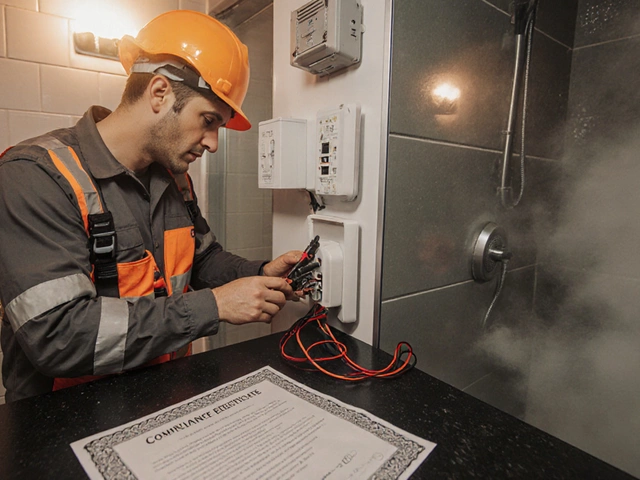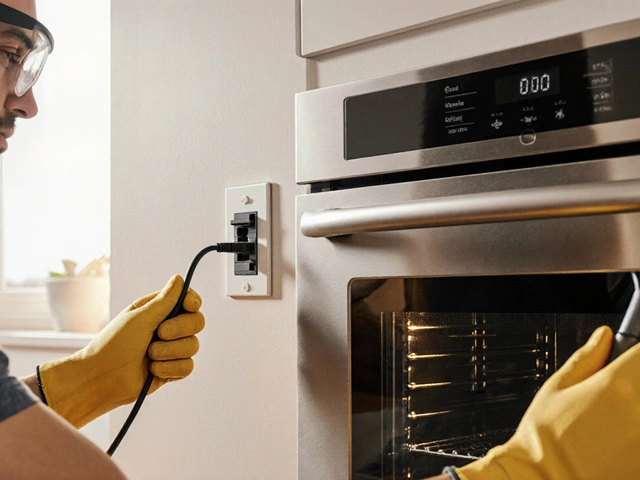Figuring out how much to spend on repairing your laptop can be tricky. It feels like a tightrope walk between investing in your current device and the allure of buying a shiny new one. But before making any hasty decisions, it’s key to grasp the ins and outs of repair costs and weigh them against the potential benefits.
Let's break down the basics. Laptop repair expenses can vary wildly, depending on what's broken and where you're going to get it fixed. Is it just a dodgy keyboard, or did you manage to pull off the dreaded cracked screen stunt? Simple fixes like replacing a charging port might set you back just a bit, say around $100. But bigger issues, like a failed motherboard, can start to rack up costs reaching hundreds of dollars.
Have you tried diagnosing the problem yourself yet? Sometimes, it’s just a matter of a loose cable or a settings tweak. But if it seems beyond your DIY skills, it's probably best to consult a professional. Knowing when to reach out for expert help can prevent unnecessary headaches (and expenses).
- Understanding Repair Costs
- Common Repair Scenarios
- When to Repair or Replace
- Tips to Extend Laptop Lifespan
Understanding Repair Costs
First things first, understanding the bits and bobs affecting repair cost for your laptop can help you make savvy choices. Different factors like the brand of the laptop, the severity of the damage, and even the age of the device play a massive role. Let's break them down a bit.
1. Brand Matters
If you're sporting a MacBook or a high-end gaming laptop, prepare to shell out more for repairs. These brands often have exclusive parts and less access to third-party servicing, bumping up the prices. Whereas, more common brands like Dell or HP can offer cheaper fixes as their parts and services are more readily available.
2. Type of Repair
Here’s a quick glimpse at what you might expect to pay for common repairs:
- Screen Replacement: Typically ranges from $150 to $400. Pricey screens like Retina display or touchscreen can be closer to the $400 mark.
- Battery Replacement: Typically sets you back around $50 to $200. Of course, the fancier the tech, the higher the price.
- Motherboard Replacement: This can cost a lot, between $300 and $600. It’s essentially the heart of your laptop!
3. Labor Costs
Don’t forget, technician charges also vary. Certified repair services often charge more for their expertise and warranty-backed work compared to local independent shops. Expect labor costs anywhere from $50 to $150 per hour.
| Service | Average Cost (Parts + Labor) |
|---|---|
| Screen Replacement | $150 - $400 |
| Battery Replacement | $50 - $200 |
| Motherboard Replacement | $300 - $600 |
Remember, it's all about balancing the costs versus the benefits of keeping your current laptop up and running. Sometimes investing a little more ensures your device lasts longer, saving you cash in the long run.
Common Repair Scenarios
When it comes to laptop repair, some issues tend to pop up more often than others. Knowing what these are can help you anticipate potential costs and better understand the repair process. Let's dive into some of the most common repair scenarios you might face.
1. Screen Repairs
Nothing is quite as heart-dropping as hearing the crack of your laptop screen. Screens are often victims of accidental drops or knocks. Good news is, this doesn’t mean the end for your device. Screen repairs can range from $100 to $300. You might find costs on the higher end for touchscreen models that require more tech magic.
2. Keyboard Malfunctions
Got a few keys not working or jammed from a coffee spill? Keyboard issues are frequent but usually not as costly. A full replacement might run you around $80 to $150, depending on your laptop model. Sometimes, you might just need to clean out the crumbs and sticky residues!
3. Battery Replacement
Battery not holding charge? This is a real drag, especially if you’re always on the go. Replacing a laptop battery typically costs between $50 and $150. Make sure to get a genuine battery from a trusted vendor to avoid future hassle.
4. Hard Drive Failures
Hard drive failures can be a nightmare, especially if you’ve got precious data stored away with no backup. If your hard drive has gone kaput, expect costs from $100 to $250 or more. The price might increase if data recovery is necessary. Sometimes, it’s a great opportunity to upgrade to an SSD for better performance.
5. Overheating Issues
Laptops, much like us, don’t perform well under stress. Overheating can often be traced back to dust buildup blocking ventilation, or failing fans. A simple cleaning might do the trick, while fan replacements can cost anywhere from $50 to $100.
| Repair Type | Estimated Cost |
|---|---|
| Screen Repair | $100 - $300 |
| Keyboard Replacement | $80 - $150 |
| Battery Replacement | $50 - $150 |
| Hard Drive Replacement | $100 - $250 |
| Fan Replacement | $50 - $100 |
Being familiar with these scenarios and their costs can save you a lot of stress down the road. Not only does this knowledge empower you when speaking to technicians, but it also helps you budget smartly for potential laptop repair expenses.

When to Repair or Replace
This one's a tough call for many; deciding whether to fix a laptop or buy a new one isn't always straightforward. Let's break down some practical guidelines to help you make that decision.
Consider the Age
If your laptop is anything north of three to five years old, it might be on its last legs anyway. Technology's moving so fast that even if you nail that repair, you might still end up with a device that can't keep up. On the other hand, if it's relatively new and under warranty, going for a laptop repair might make more sense.
Assess the Repair Cost
As a rule of thumb, if the repair cost is more than half the price of a new laptop, that’s your cue to start looking at replacements. Would you pour money into something that might need another costly repair down the line? A repair that costs $300+ for a laptop you got for $500 is probably a sign to consider an upgrade.
Evaluate Performance Needs
Think about what you need from your laptop. Is it struggling with running new software or too slow for your current needs? Sometimes, repairs only patch a sinking ship. Assess whether it can deliver on your current requirements or if it's barely keeping pace.
Cost vs. Longevity Table
| Repair Cost | Laptop Age | Recommendation |
|---|---|---|
| <$150 | <3 years | Repair |
| $150-$350 | 3-5 years | Evaluate |
| >$350 | >5 years | Replace |
This table provides a quick reference on balancing repair expenses with how long you've had the laptop. Of course, there's always the sentimental value of a trusty device, but if it's not all that trusty anymore, take the leap and treat yourself to something more reliable.
In a nutshell: If the laptop's still fairly new and there's a straightforward fix, it's worth repairing. But if you find yourself constantly dealing with issues, replacing might save you from a cycle of endless repairs.
Tips to Extend Laptop Lifespan
Keeping your laptop in tip-top shape doesn't have to be a slog. With a few practical habits, you can stretch its lifespan and save yourself some cash in the process. Let's see what steps you can take to give your trusty device a longer life.
Regular Cleaning
Dust and grime aren't just unsightly; they're the silent killers of your laptop's performance. Be sure to clean the keyboard, screen, and vents regularly. Use a can of compressed air to blow out dust from the vents to prevent overheating. Remember, a clean laptop runs smoother.
Updating Software
Staying on top of software updates is like having a regular health check-up. Updates often include security patches and performance improvements. By keeping your operating system and applications updated, you're making sure everything runs as efficiently as possible.
Battery Care
A common mistake people make is keeping the laptop plugged in all the time. It's best to let the battery drain to about 20% before you charge it back up to around 80–90%. This practice helps in maintaining the battery's health over the long haul.
Safe Handling and Storage
Avoid dropping or banging your laptop, as physical damage can be costly. Invest in a good case or sleeve and don't forget to unplug peripherals and power cords before moving it around. Also, avoid leaving your laptop in hot cars or cold environments, as extreme temperatures can damage internal components.
Use an External Keyboard and Mouse
If you’re working for extended periods, using an external keyboard and mouse can reduce wear and tear on your laptop's built-in components. Plus, it's way more ergonomic, especially for long work sessions.
While these tips won't make your laptop last forever, they'll definitely help extend its usability, saving you from plunging headfirst into the endless sea of laptop repair bills. A little care goes a long way, so try incorporating these tips into your daily routine.







